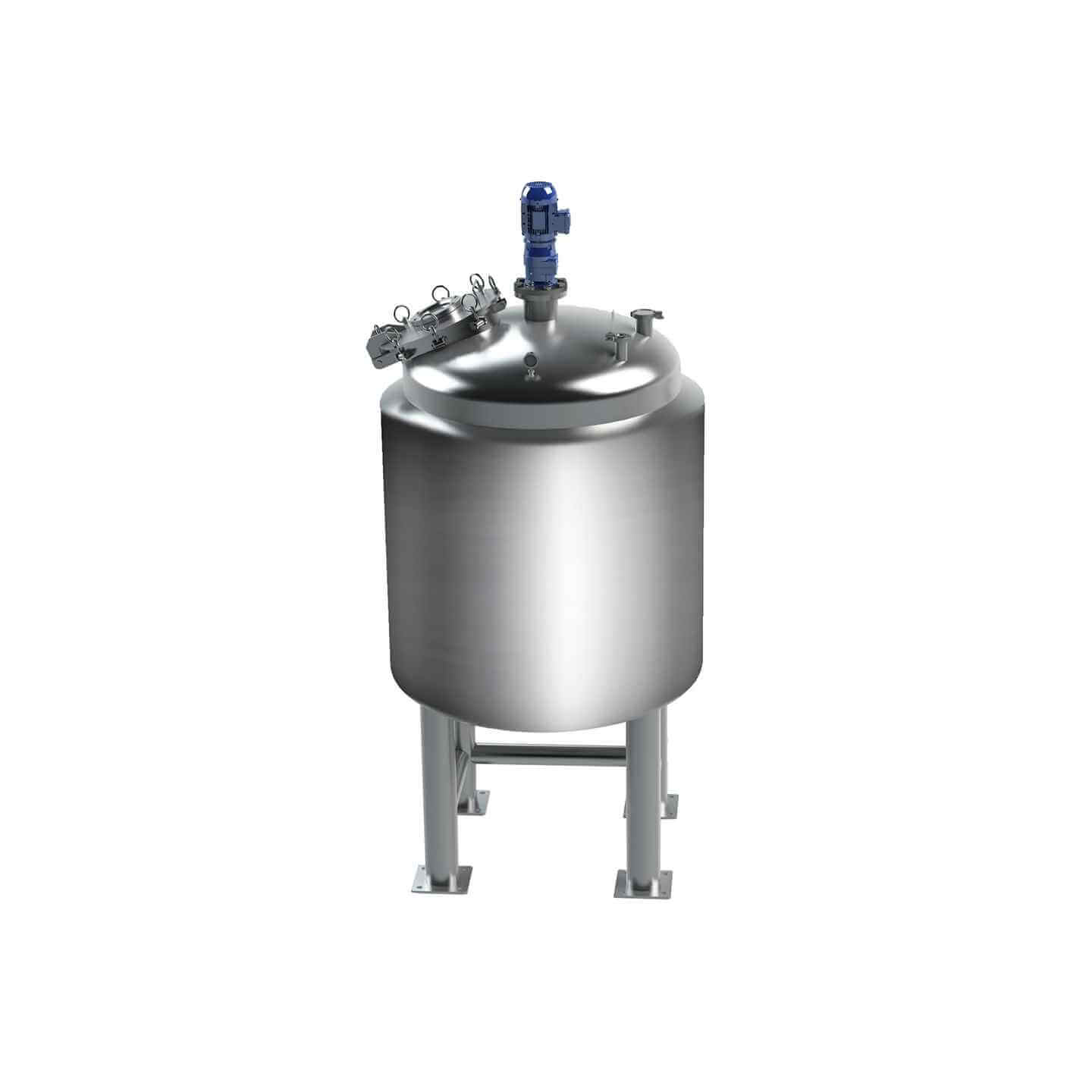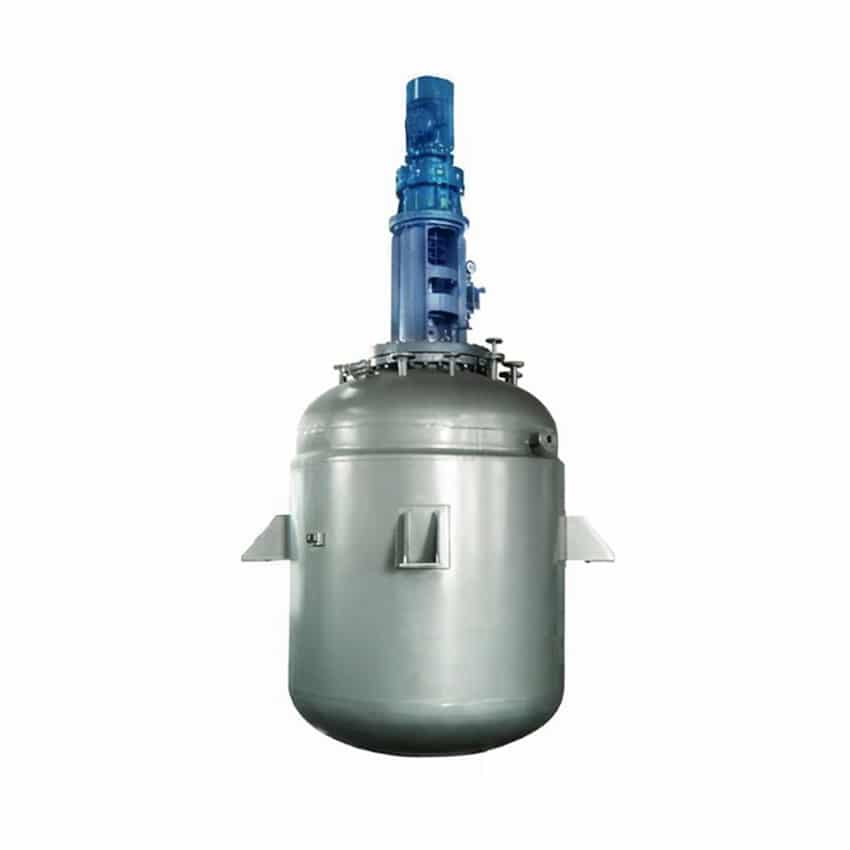

Jacketed Reactor
Jacketed reactor: used in the chemical industry, pharmaceutical industry and food industry, and other fields
Material
glass, stainless steel (316, 304), carbon steel, others
Capacity (L)
10-10000+
Mixing system
anchor, paddle, frame and others
Heating system
electric heating, oil heating and others
Jacketed reactors can be divided into steam heating reactors and heat transfer oil heating reactors according to different heating media, both of which are widely used in medicine, the chemical industry, plastics, rubber, building materials, food, and other industries. Corrosion, no environmental pollution, no need for automatic boiler heating, ease to use, and so on.
Request a quoteUsing a jacketed reactor as a heat transfer vessel, an external heat source can be introduced to heat the material, or the heat carrier can absorb the heat energy of the material to cool the material. Depending on the heat source, the jacketed reactor body can be designed in different forms.

Jacketed reactor heating form
Direct heating, such as direct fire heating of fuel combustion, resistance far-infrared heating, or power frequency inductive heating, all directly heat the bottom of the kettle and the cylinder.
Indirect heating, using a gas or liquid heat carrier to heat the jacketed reactor. Such as steam heating and heat transfer oil heating. For indirectly heated jacketed reactors, various forms of heat transfer structures are required. Common jackets and half-pipe jackets are most commonly used outside the kettle body, and coiled tubes (coils) are commonly used inside the kettle body. To increase the heat transfer area, some kettles are equipped with heat transfer baffles. These heat transfer structures, such as the passage of cooling media such as cooling water, can be used for cooling.
The height of the jacket of the jacketed reactor should not exceed the height of its internal liquid level to avoid “dry burning”, which may cause local overheating or coking of the materials in the jacketed reactor. To adapt to the different liquid levels of materials in the jacketed reactor At the same time, to adjust the size of the heating area more conveniently, the jacket can also be designed into 2 or 3 sections. This design is particularly suitable for jacketed reactors where raw materials are added in batches. Many large-scale alkyd resin reactors have jackets with 3 sections (including the bottom of the kettle), while others are designed with 2 sections. Experience shows that lowering the jacket position and designing the jacket into 2 sections is most appropriate.
The jacket width is mostly 50mm. For large jacketed reactors of more than 10 cubic meters, the jacket width can be expanded to about 100mm. To improve the heat transfer effect, helical baffles are often set in the jacket. The gap between the spiral deflector and the kettle wall or jacket wall should be as small as possible to prevent the heat carrier from taking a “shortcut”. The spiral deflector increases the flow rate of the heat carrier, improves the convective heat transfer coefficient of the fluid on the jacket side, and makes the heat carrier evenly distributed in the jacket to prevent “dead corners”.
In order to reduce the temperature difference stress caused by the temperature difference between the cylinder wall and the jacket wall, an expansion joint is often installed in the upper jacket of the jacketed reactor. The bottom jacket has a certain compensation ability, so the expansion joint is no longer installed. The gaseous or liquid heat carrier is vented in the jacket, and the cylinder is subjected to external pressure. The jacketed cylinder should be considered as an external pressure vessel, and the thickness should be calculated. During operation, it must be noted that the pressure in the control jacket should not exceed the design value, otherwise, the cylinder will be crushed.
A Half-pipe jacket is also called a spiral semi-circular pipe jacket. Half-pipes can be cut from whole pipes or formed from sheet metal.

Characteristics of jacketed reactor half-pipe jacket
1. It can reduce the wall thickness of the equipment and save materials. Since the barrel and head of the jacketed reactor should be designed according to the external pressure vessel, the wall thickness is relatively large. For jacketed reactors, due to the small size of the half-pipe and the welded half-pipe that greatly enhances the rigidity and pressure-bearing capacity, neither the barrel nor the head needs to be an external pressure vessel. Wall thickness is greatly reduced. For example, for a jacketed reactor with a volume of 12m³ (thermal oil heating), the nominal wall thickness of the jacketed reactor is 16mm, the nominal wall thickness of its bottom is 20mm, and the nominal wall thickness of the semi-jacketed reactor is 20mm. Its barrel and head only require 10mm.
2. Improve heat transfer efficiency Due to the small cross-sectional area of the flow channel of the half-pipe and the large flow rate of the heat carrier, the convective heat transfer coefficient is also large and the heat transfer efficiency is improved. This feature is suitable for liquid heat carriers.
3. The total volume of the energy-saving half pipe is much smaller than the total volume of the jacket. Still taking the 12m³ jacketed reactor as an example, the total volume of the jacket is 1.8m³, while the total volume of the half pipe is only 0.2m³, a difference of 8 times. In some jacketed reactors, heating and cooling are repeated repeatedly during the production process. The jacket heat carrier has a large capacity, and in the process of repeated heating and cooling, it will consume more energy.
Disadvantages of the jacketed reactor: First, it is difficult to manufacture and labor-intensive. Therefore, although some materials are saved, the total cost is still similar to that of the jacketed reactor. Second, it is easy to leak. The reason is that there are too many welding seams and high welding quality requirements. In particular, jacketed reactors that are repeatedly heated and cooled are prone to welding cracks due to the influence of thermal stress. Since the possibility and probability of weld leakage in a jacketed reactor are high, the jacketed reactor is most suitable for heating and cooling liquid phase heat carriers and low-temperature resin reactors at high temperatures. The half-pipe jacket of some jacketed reactors is only used for thermal oil heating, and cooling is specifically used for water cooling through the coils in the kettle.
4. A coiled tube, also known as a coiled tube, is an immersion heat transfer device. The purpose of setting up the coil is to increase the heat transfer area, speed up the heating and cooling speed, or cool the jacketed reactor with a jacket or half-pipe jacket. For some jacketed reactors that do not have or cannot be equipped with various types of jackets (such as resistance far-infrared heating or power frequency induction heating reactors), it can play the role of cooling and auxiliary heating. Generally, when the capacity of the jacketed reactor is greater than 6m³, coiled pipes can be considered based on the existing jacket. Most of the coils are coiled into a spiral shape that is concentric with the kettle wall, and most of them are in a single row. The coiled tube in the jacketed reactor is a single-row coiled tube, which is divided into upper and lower sections for easy adjustment. Since the coil is located in a jacketed reactor, once leakage occurs, it may cause a major accident, so it must be safe and reliable.
①. Ensure the quality of design and manufacture Coils should be designed to withstand higher pressure. Quality should be strictly inspected.
②. The support of the coil should be fastened to a strong bracket, which must be welded to the wall of the jacketed reactor. When the materials in the jacketed reactor are vigorously stirred, any looseness will cause the coil to vibrate and rub against the bracket. Over time, coils can wear out and leak.




